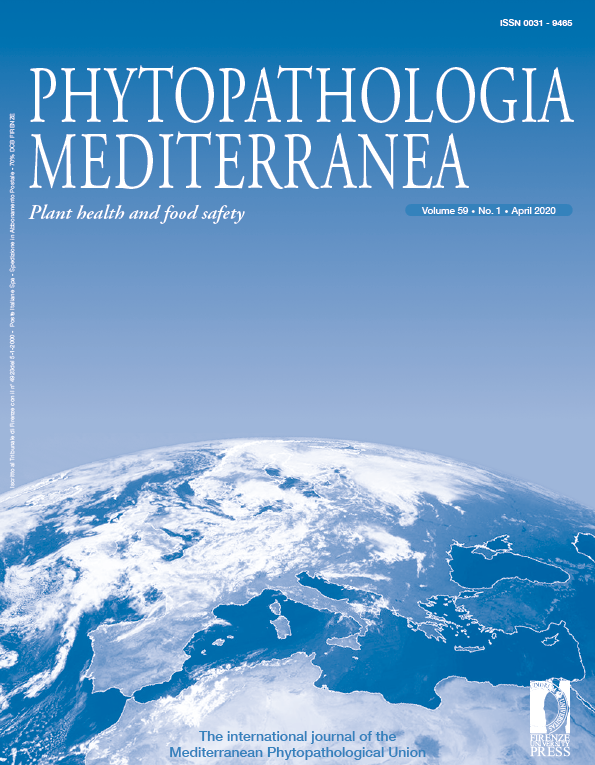Published 2020-03-14
Keywords
- Olive viruses,
- RT-PCR,
- olive RNA extraction protocol,
- virus-tested propagation material
How to Cite
Abstract
Although Greece is the world’s third largest olive production country, information about the presence of olive viruses is limited. A survey for the presence of virus infections in the ten most important Greek cultivars was conducted in a germplasm collection olive grove located in Chania, Crete. Samples were RT-PCR assayed for the presence of Arabis mosaic virus (ArMV), Cherry leafroll virus (CLRV), Strawberry latent ring spot virus (SLRSV), and Olive leaf yellowing-associated virus (OLYaV), amplifying part of the capsid protein (ArMV), the 3΄UTR (CLSRV, SLRSV) or the HSP70h (OLYaV) gene. Total RNAs were purified using the Trizol method, yielding good quality and purity, thereby confirming application of the method as a rapid economic extraction protocol for detection of olive viruses. SLRSV was the most predominant virus, with an infection rate of 55%, followed by CLRV and OLYaV in 5% of the tested samples. ArMV was detected only in one sample. Mixed virus infections were also commonly detected. The DNA amplicons of the obtained viruses from the infected samples were sequenced. The partial sequences of ArMV, CLRV and SLRSV from olives, which are reported for the first time, showed 74-100% nucleotide similarity with available homologous sequences from other crops, whereas OLYaV isolates showed high sequence variability of 25%. The phylogenetic analysis based on olive-OLYaV HSP70h partial-nucleotide sequences grouped the olive isolate sequences according to the geographical origins of the host germplasm collection. This is the first official report of the occurrence of olive viruses in Greece, emphasizing the need to implement a certification programme for production and distribution of high-quality (virus-free) olive propagation material, in Greece and more generally in the Mediterranean basin.







